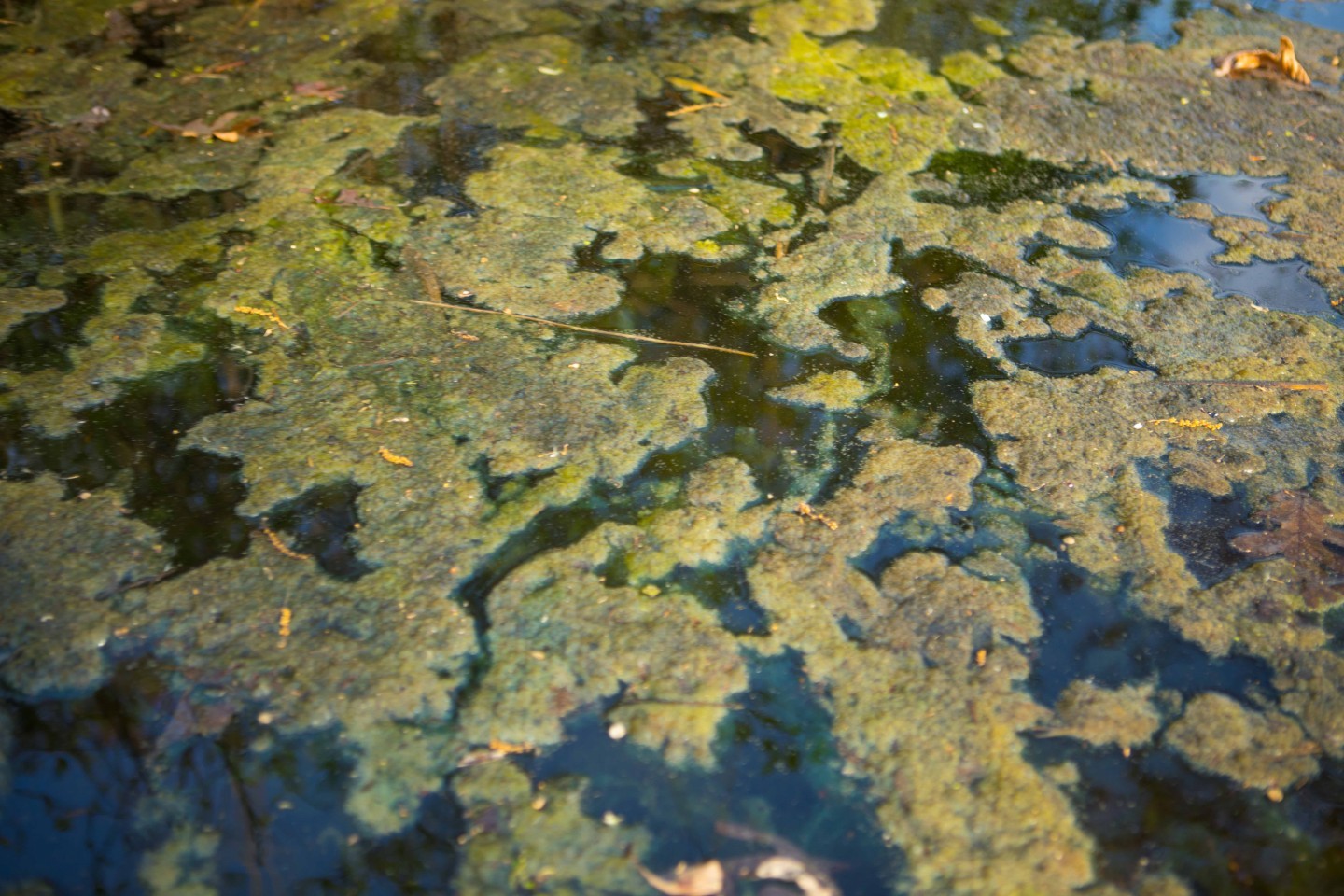
During the first week of July, harmful algal blooms (HABs) forced all twenty-one of Mississippi’s beaches to close. In 2017 and 2018, the Gulf Coast of Florida suffered through a toxic red tide that lasted for more than a year. In the Great Lakes, harmful algal blooms are threatening drinking water supplies. In fact, harmful algal blooms are impacting beaches, lakes, and waterways across the country. Which begs the question, as the global climate continues to warm and nutrient pollution proliferates, is this the new normal?
Harmful algal blooms are attributed to a number of factors, generally: pollution from wastewater, lawn fertilizers and agricultural runoff increases nutrient levels in waterways, fueling the growth of toxic algae blooms. Algal blooms particularly love warm water, and thrive during the hot summer months. Learn more about the growing threats posed by algal blooms in every U. S. state in this Popular Science article.
Harmful algal blooms in Florida have caused major environmental damage including massive die-offs of fish, sea turtles and other marine life. The prolonged and prolific blue green algae, or Cyanobacteria, bloom in 2016 suffocated over 30,000 acres of seagrass. HABs can cause serious health impacts to humans as well. Skin contact with cyanotoxins can cause irritation of the skin (rash or skin blisters), eyes, nose and throat, and inflammation of the respiratory tract. Swallowing water containing high concentrations can lead to nausea, vomiting, abdominal pain and diarrhea. Effects on the liver and nervous system of animals and people have also been documented in severe cases. There is even emerging evidence linking exposure to HABs with neurodegeneration similar to Alzheimers.
Watch this short film to better understand the impact that harmful algal blooms are having in Florida.
Harmful algal blooms can seem like a problem so massive that individual actions won't make a difference, but even simple actions to reduce the amount of nutrients that are reaching our beaches and waterways can have big impacts. Here’s how you can stay safe at the beach and help support clean water locally:
1. Know before you go. Access local beach reports and algae advisories in every coastal state through Surfrider’s new online tool here.
2. Advocate! Ask Congress to push back against the current administration’s efforts to roll back protections under the Clean Water Act and to defund important environmental programs. Send your email here.
3. Go local! Work with your city or county government to:
- Pass fertilizer restrictions
- Support funding for green infrastructure
- Adopt stormwater best practices like vegetative buffers along waterways and requirements to keep yard waste out of storm drains.
4. Start at home!
- Skip chemical fertilizers, especially during the hot summer months.
- Plant natives and consider an Ocean Friendly Garden.
- Take your car to a commercial car wash, or if you must wash at home- make sure you do it over grass or gravel (not the road).
- Scoop the poop. Make sure you pick up your pet's waste.
- If you have a septic tank, get it inspected and pumped regularly.
HABs and beach closures do not have to be the new normal. Find your local Surfrider Foundation chapter and join the fight for clean water and healthy beaches!
